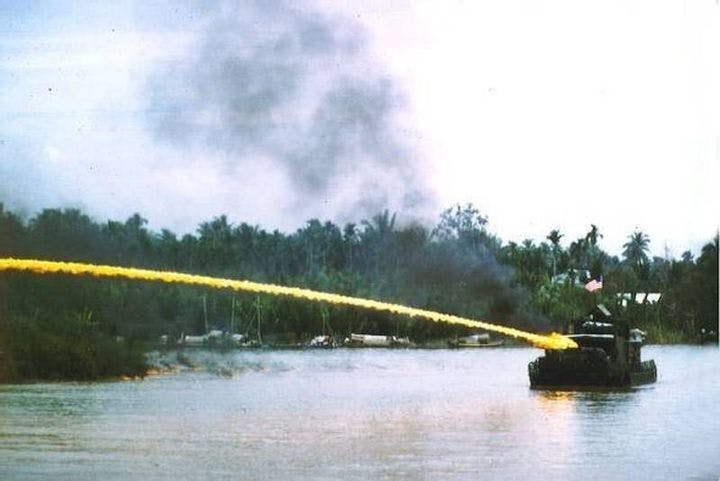In war, how much environmental destruction is too much?
– Nicole Panoc
Environmental devastation has been a consequence of war since time immemorial. Can we draw a line between necessary and gratuitous destruction? Where?
At its most primal level, one’s mission in war is simple: defeat the enemy, and win control over the resource or territory in question. Naturally, the reality of war is more complex. At its most brutal, victory in combat is not enough, but merely a milestone en route to annihilation and punishment of conquered peoples and the exploitation and corruption of their taken lands.
“Environmental devastation is not only a byproduct of war, but has also been a military strategy since ancient times,” writes Bronwyn Leebaw in Perspectives on Politics. It’s a tactic literally as old as the proverbial “salting of the earth,” and yet while that action is obviously cruel and punitive (preventing land from bearing crops, and destroying a population’s food source and economic foundation), where do we draw the line between legitimate and illegitimate wartime environmental destruction?
“These distinctions matter a great deal in understanding how the just-war tradition and humanitarian norms [can] legitimate certain forms of violence and destruction,” writes Leebaw, “as well as their potential critical role in response to war.” Here, she draws upon the works of Dutch philosopher Hugo Grotius, a jurist who grappled with the hazy questions of the treatment of enemy property in war, and the U.S. Civil War-era Lieber Code, which provided the basis for the 20th century’s Geneva Conventions. “The principle of military necessity,” argues Leebaw, “has been interpreted to permit potentially limitless destruction, as long as such destruction is carried out in accordance with perceived wartime imperatives.” She emphasizes that wanton destruction of property is not permitted.
Yet, the wantonness of environmental destruction is not necessarily apparent at the time of damage, and often becomes obvious only years and decades later. Often, such tactics can be justified in the heat of combat and fog of war. Take, for instance, the U.S. military’s use of Agent Orange and napalm (among other defoliants and herbicides) during Operation Ranch Hand during the Vietnam War. The goal was to strip trees of leaves and destroy the heavy foliage the Vietcong used to its merciless advantage in its attacks on U.S. troops. In the moment, one could make a moral argument that such destruction wasn’t wanton, but rather, an action necessary to save American lives.
In the broader scope of history, though, Agent Orange’s environmental and human misery is impossible to justify: generations of Vietnamese children (and stillborn babies) with massive defects and deformities, U.S. veterans and Vietnamese combatants and civilians alike with substantially higher likelihood of cancer, millions of acres of soil contaminated, dozens of species of wildlife killed off. Here, Leebaw borrows from Yale biologist Arthur Galston: “We are too ignorant to know how far-reaching and how long lasting will be the changes in ecology brought about by widespread spraying of herbicides in Vietnam.” The danger of these Pandora’s Box situations, writes Leebaw, “is that instead of becoming a cautionary tale that inspires prudence and restraint, [they] can too easily … justify fatalism and the evasion of responsibility.”
In the long run, warfare is a complicated matter, and military leaders — by necessity — must prioritize the objectives of their missions and safety of their troops before the preservation of the environment. At the heart of the matter, a decrease in environmental destruction is less likely to come about from a change in the tactics of warfare than from a rise in diplomacy. Violence, sadly, will continue against man and earth alike.
* * *
The Source: “Scorched Earth: Environmental War Crimes and International Justice” by Bronwyn Leebaw, Perspectives on Politics vol. 12 2014, pp 770-788.
Photo courtesy of the U.S. Government
